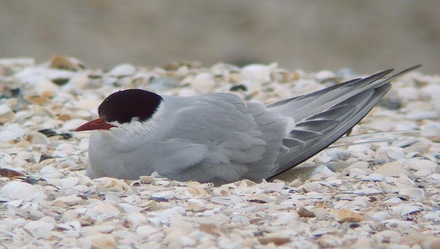
image credit - christoph meuller; creative commons license

The ARCTIC TERN flies thousands of miles from the Antarctic to the Arctic ( 22,000 miles or 35,000 km). The tern flies to the Arctic to nest and raise its young. The nest is a dent on the ground, built on the tundra or on a stony beach near water. The mother tern lays two or three eggs. If anyone comes near the nest the tern gives out warning calls and attacks. In August the terns leave the Arctic to fly to the Antarctic.
more about the Arctic tern
Large colonies of SNOW GEESE nest by the tundra pools. The nests are built of moss and other tundra plants. In the fall they fly as far south as Mexico for the winter.
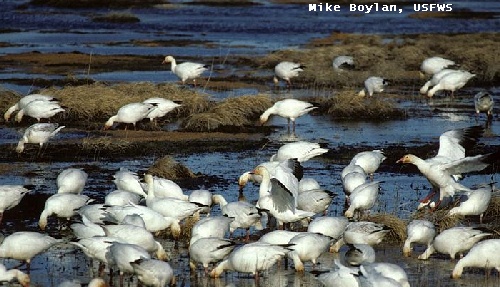
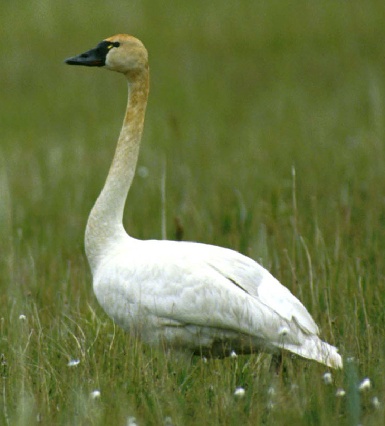 image credit : John and Karen Hollingsworth, US Fish and Wildlife Service, license: public domain |
TUNDRA SWANS build nests near shallow pools, lakes or rivers on the tundra of the Canadian Arctic and Alaska. The young birds (called cygnets) need to be kept warm by a parent sitting on them. They need protection from the cold and the mosquitoes. By the beginning of September the young birds must be able to fly well. When the weather turns cold, tundra swans fly south to the United States to spend the winter. Tundra swans migrate 6000 km each year.
|
 |
RAVENS are the largest members of the crow family.
They are almost twice as big as crows.
Ravens are able to survive the cold and remain in the Arctic all year. Their black feathers absorb heat. The raven steals food from other animals and hides
food. Ravens eat small mammals, birds, eggs,
insects, worms and berries. In the winter ravens will follow polar bears and eat any meat that
the bears have left behind.
The Inuit have legends about this big black bird. Stories and songs tell about Raven the Thief or the Trickster.
|
|
THE PTARMIGAN is a bird about the size of a small chicken.
It is able to stay in the Arctic year round because
it has adapted to the cold Arctic weather.
The ptarmigan is completely covered with feathers
even the beak and the feet. The feathers on the feet make it
able to walk on soft snow without sinking. A white winter coat matches the snow and changes to brown for spring and summer.
|
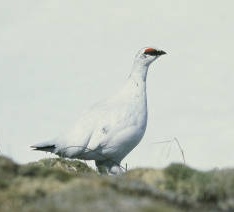
|
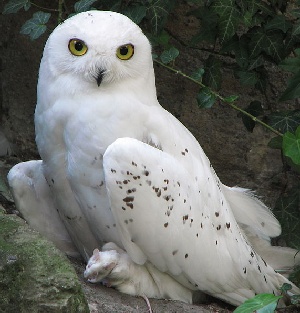 |
The SNOWY OWL is able to live in the Arctic year round.
This owl is covered with feathers from head to toe to protect it during the severe cold winter. Lemming is their main source of food. They feed on other small animals (ground squirrels, hares, birds ). When there is little food to be found, the owl leaves the tundra and flies further south, then returns in the spring to nest. The snowy owl may lay more than ten eggs if there are plenty of small animals to feed the young owls. |
| THE ARCTIC : INTRODUCTION ** PEOPLE ** ANIMALS ** PLANTS ** ARCTIC INDEX |
photo credits:
snow geese in water - courtesy of Mike Boylan, US Fish and Wildlife Service, license - Public Domain
ptarmigan - courtesy of Dave Menke, US Fish and Wildlife Service, license - Public Domain
white snowy owl - courtesy of Adamantios, Wikimedia, Creative Commons Attribution ShareAlike 3.0